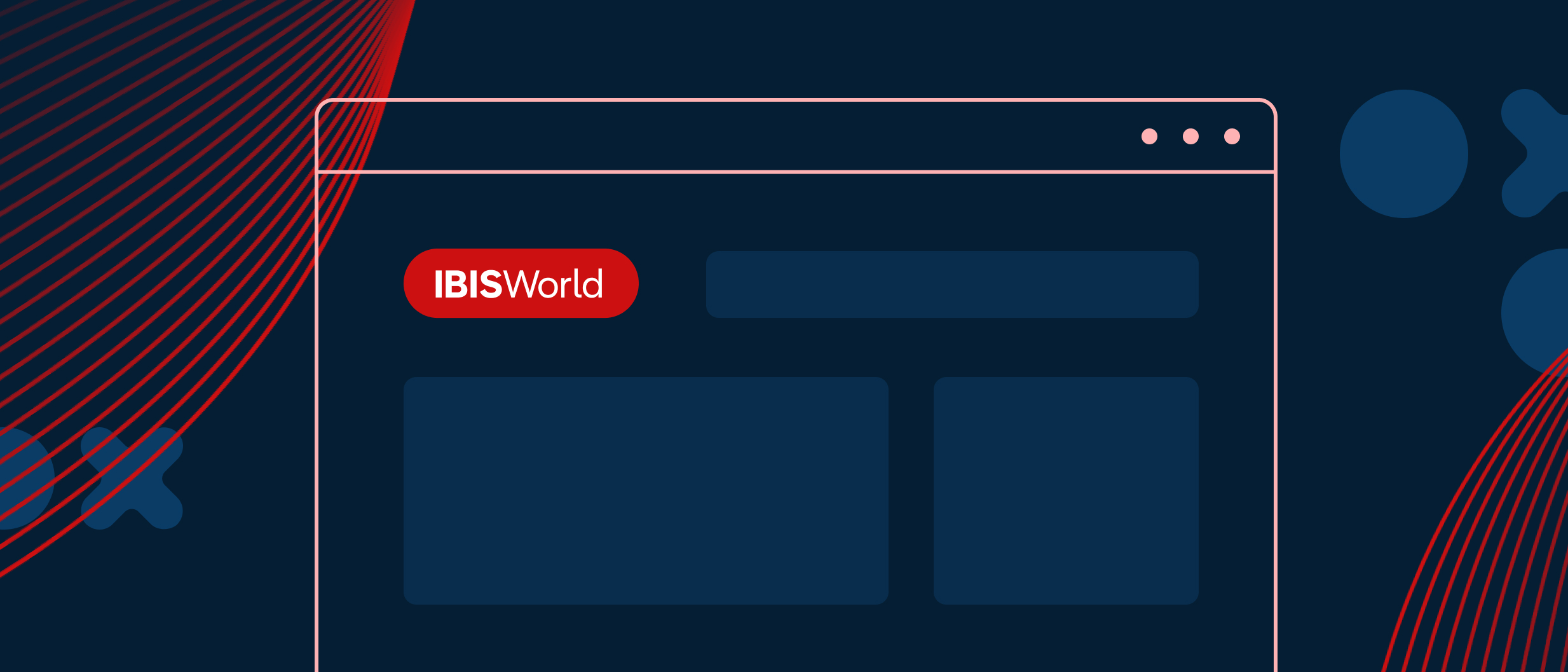Key Takeaways
- Volatility in revenue, input costs and regulation can quickly erode borrower repayment capacity and undermine the value of pledged collateral.
- Sectors like mining, manufacturing, and accommodation services carry elevated credit risk due to exposure to external shocks and cyclical demand.
- Traditional credit models often fall short in volatile industries—stress testing and integrating volatility metrics help sharpen risk assessments.
- Lenders can mitigate risk by adjusting covenants, tightening loan terms, and requiring borrowers to hold reserves or share in volatility exposure.
Even the cleanest credit file can go sideways if the borrower’s industry turns. One quarter they’re profitable—next quarter, a sudden drop in demand, input costs spike, or new regulations hit, and cash flow vanishes. By the time the numbers reflect it, the damage is done.
For credit teams under pressure to move quickly and confidently, industry volatility is a risk that’s often underestimated—and frequently misunderstood. It’s not just about macroeconomic turbulence. It’s about how fragile a borrower’s business model becomes when the conditions they can’t control shift overnight.
Volatility magnifies credit risk by disrupting repayment capacity, reducing collateral reliability, and throwing off even well-calibrated models. In volatile sectors, traditional assumptions often collapse under pressure—and the lender is left holding the risk.
Volatility’s impact on credit risk: Why it undermines predictability
Volatile industries challenge the core assumptions of credit analysis: that revenue, profit, and collateral values will behave within a reasonably predictable range. When that stability disappears, the ability to assess and manage risk weakens significantly.

At the core, volatility refers to the magnitude and frequency of revenue swings across an industry. While some variation is expected, high-volatility sectors routinely experience revenue shifts exceeding 10% to 20% annually, driven by external factors beyond a borrower’s control—global demand shocks, commodity price changes, policy shifts, or consumer sentiment swings.
This unpredictability makes it harder to forecast a borrower’s financial performance with confidence. Cash flow volatility increases the chance that a company will fall short on repayment, even if current financial ratios appear healthy. In short, volatility erodes the lender’s ability to trust past performance as a guide to future solvency.
Collateral risk increases
Volatility doesn't only affect income—it can also erode the reliability of collateral. Asset-heavy industries like mining, construction, or manufacturing often pledge equipment or property to secure debt. But in volatile markets, the resale value of these assets can fluctuate sharply, diminishing recovery prospects in the event of default.
In practice, this means a loan backed by high-value equipment today could become under-secured within a single business cycle. For lenders, that’s a double hit: elevated default risk and weakened fallback protection.
Traditional models fall short
Standard credit models rely on stable inputs: projected revenue, margins, debt coverage ratios. In volatile sectors, these inputs lose reliability. Unexpected shifts in revenue or cost structures can invalidate assumptions mid-cycle, especially in industries where external forces—not management performance—dictate financial outcomes.
A notable example is the collapse of Chesapeake Energy in 2020, a major shale gas producer. While the firm’s financial strain predated the pandemic, models failed to anticipate the extreme oil price shock triggered by the global shutdown. As a result, loan structures built on conventional revenue projections unraveled rapidly when oil demand collapsed and cash flow evaporated.
Volatility as a differentiator in risk profiles
Volatility can materially alter the creditworthiness of two businesses with otherwise similar financials. Consider a theater operator and a real estate investment firm, both posting comparable profitability and leverage ratios. The former’s exposure to discretionary consumer spending makes its income highly sensitive to downturns; the latter benefits from longer lease terms and relatively steady demand. As a result, identical metrics don’t translate to equivalent risk.
For credit teams, this means volatility must be embedded into the assessment process—not treated as an afterthought. That includes tailoring loan structures, collateral terms, and repayment expectations based on the inherent volatility of the borrower’s industry.
Key factors behind industry volatility to watch
While industry volatility can emerge from many sources, three drivers consistently shape the risk environment for credit teams: demand instability, input cost swings, and regulatory change. Understanding how these forces operate—and how they vary by sector—helps underwriters anticipate cash flow disruptions and stress-test risk across portfolios.
1. Demand instability
Few forces drive volatility more directly than rapid swings in consumer or business demand. In recent years, global events have amplified this pattern—compressing and releasing demand with little warning.
The pandemic created an unprecedented demand shock, slashing revenue across industries like retail, accommodation, and arts. Recovery was sharp but uneven. As the economy reopened, these sectors experienced rapid surges in revenue—followed by renewed instability as inflation and interest rates dampened household and business spending through 2023 and 2024. Looking ahead, trade policy shifts such as newly implemented tariffs in 2025 may restrain global growth, with ripple effects for export-reliant industries.

For credit teams, these fluctuations complicate revenue forecasting and debt coverage assessments. The borrower may be performing well today—but if revenue is highly cyclical or dependent on discretionary spending, even a modest downturn can result in cash shortfalls and late repayments.
Credit application tip: Evaluate historical revenue patterns across multiple economic cycles. Use sector-specific data to model downside scenarios—not just point-in-time performance.
2. Input cost swings
Industries with heavy reliance on raw materials—such as manufacturing, construction, agriculture, and mining—face persistent input cost volatility. These shifts often stem from global supply disruptions, geopolitical instability, or inflationary pressures that ripple through upstream supply chains.
For upstream producers, rising input costs can be passed to customers—supporting revenue but sometimes masking deteriorating cost structures. For downstream firms, those same increases tighten margins and constrain borrowing capacity.

From 2021 to 2023, surging prices for steel, concrete, and energy had a profound impact across sectors. Australian construction firm Clough, for example, entered administration in 2022 after cost blowouts on major infrastructure projects. Margins collapsed, cash flow dried up, and debt repayment capacity unraveled.
What to watch: Historical price data on key inputs, supply chain concentration, and the borrower’s ability to hedge or pass through costs. In credit memos, note whether a company operates upstream or downstream—input volatility cuts both ways.
3. Regulatory change
Policy and regulatory shifts can alter sector dynamics overnight. While some changes are incremental, others—such as environmental mandates, labor rulings, or tax reforms—can materially impact revenue models and cost structures.
Consider the UK’s 2016 Soft Drinks Industry Levy, which led beverage producers to overhaul formulations to avoid penalties. Or the 2021 UK Supreme Court ruling reclassifying Uber drivers as workers, which raised operating costs across the gig economy. Even well-capitalized firms can see performance weaken as they scramble to adapt.
Credit teams should recognize that regulatory volatility is not just a compliance issue—it is a revenue and cost issue. Businesses with narrow margins, high labor exposure, or heavy energy use are particularly vulnerable.
Risk mitigation approach: Flag industries currently under regulatory scrutiny. Track proposed legislation that could reshape industry economics, particularly in sectors like transport, healthcare, energy, and gig work platforms. Where uncertainty is high, structure loans with flexible terms or additional protections.
Top sectors facing credit risk due to volatility
Some sectors experience volatility as a feature of their operating environment, not an exception. Below are three key industries where credit risk is currently elevated due to persistent instability in revenue, costs, and regulatory exposure.
Manufacturing: Capital-intensive and margin-exposed
Manufacturers typically rely on significant debt to fund plant expansions, procure equipment, and manage working capital. While not as volatile as some service sectors, manufacturers are deeply sensitive to input cost fluctuations, global demand shifts, and geopolitical disruptions—factors that have become more frequent and extreme in recent years.

Recent pressure points:
- Declining demand in key downstream markets like automotive and housing.
- Global trade disruptions and tariffs driving input price unpredictability.
- Regulatory uncertainty in emissions and energy usage in major markets.
Case in point:
Nylon producer Ascend Performance Materials defaulted after weak demand in its core markets cut into earnings and strained liquidity. In the UK, newly imposed tariffs in 2025 are already pressuring some manufacturers’ cost structures, increasing concerns over default risk.
Lender considerations:
- Tighten covenant structures based on input price risk or downstream demand exposure.
- Assess plant-level collateral value conservatively; it may not hold in stressed scenarios.
- Consider restricting high-risk capital investments in uncertain regions.
Mining: High volatility, high sensitivity to external shocks
Mining revenue is tightly tied to commodity price movements, which are in turn influenced by global economic cycles, geopolitical tensions, and supply-side shocks. Even short-term price collapses can severely impact a miner’s ability to service debt—especially when debt levels are high and costs are front-loaded.

Recent pressure points:
- Post-pandemic slump in commodity prices.
- Supply chain bottlenecks followed by surging demand (2021–2022).
- Increased environmental scrutiny and ESG-driven policy change.
Case in point:
Companies like Sibanye Stillwater, Allegiance Coal USA, and Griffin Coal all faced severe financial distress in recent years. Falling commodity prices and rising operating costs combined to erode cash reserves, forcing defaults and restructures.
Lender considerations:
- Require upfront capital or reserve accounts for volatility buffer.
- Use trailing commodity price data to apply downside stress tests.
- Incorporate optionality for repayment adjustments in extreme market moves.
Accommodation & food services: Discretionary and cycle-sensitive
Businesses in this sector, such as hotels, restaurants, and bars, face high fixed costs and volatile, often seasonal revenue streams. Since these services are largely discretionary, revenue collapses quickly during downturns, limiting the ability to service debt, particularly for firms with recent expansions or debt-funded renovations.

Recent pressure points:
- COVID-19 shutdowns and uneven recovery.
- Labor shortages and wage inflation.
- Shifts in consumer spending tied to interest rates and household confidence.
Case in point:
TGI Fridays filed for bankruptcy in late 2024, citing pandemic impacts and more recent macroeconomic pressures. Similar challenges have been echoed across regional restaurant groups and hotel operators still carrying pandemic-era debt.
Lender considerations:
- Consider flexible repayment structures tied to revenue thresholds.
- Structure loans with recession-contingent triggers or seasonal payment relief.
- Assess debt-funded CapEx projects critically in this sector.
Strategies for credit teams navigating volatility
Volatile industry conditions require credit teams to move beyond conventional models and adopt more agile, forward-looking practices. Assessing a borrower’s current financials isn’t enough—teams need to anticipate how quickly those numbers could change and what that means for repayment capacity, collateral value, and overall portfolio exposure.
Below are four strategies that help credit professionals address the specific risks tied to volatility.
1. Stress-test exposure to vulnerable industries
Relying solely on historical performance or average-case scenarios can understate risk in volatile sectors. Credit teams should simulate high-impact, low-frequency events across industries to assess how loans and portfolios could behave under strain.
Use case example:
Model a sudden 25% drop in revenue due to demand contraction in accommodation services, or simulate a 40% commodity price swing for mining borrowers. Assess whether borrowers can maintain debt service, and whether collateral values remain viable under stress.
Tactical applications:
- Apply scenario analysis during underwriting for sectors with high volatility scores.
- Revisit exposure limits to industries with clustered risk.
- Use stress test results to inform loan structuring and covenant design.
2. Integrate industry-specific volatility metrics into credit models
Traditional credit scoring tools often overlook sector-specific risk drivers. Integrating volatility metrics—such as historical revenue swings, wage volatility, and enterprise entry/exit rates—adds a layer of precision when evaluating sector risk.
Why it matters:
Two businesses with identical ratios can represent different levels of risk depending on their industry’s volatility. Volatility metrics help separate structurally stable borrowers from those exposed to rapid change.
Tactical applications:
- Use IBISWorld’s volatility scores as an overlay on core financial ratios.
- Adjust debt-service coverage ratio (DSCR) thresholds upward in high-volatility sectors.
- Apply stricter thresholds for collateral valuation in volatile markets.
3. Closely monitor legislative and regulatory developments
Regulatory change is a key volatility driver, particularly in sectors like transport, healthcare, agriculture, and energy. Sudden changes can alter cost structures, revenue models, or workforce classifications—potentially undermining a borrower’s repayment capacity.

Use case example:
A local council implements new environmental restrictions on freight carriers, forcing costly retrofitting or route changes. Firms caught off guard may face service delays and margin compression.
Tactical applications:
- Maintain a watchlist of sectors under regulatory review.
- Partner with external research firms or internal analysts to track policy shifts.
- Reflect regulatory exposure in pricing, collateral requirements, or loan terms.
4. Require borrowers in high-volatility sectors to share in the risk
In industries where sharp downturns are likely, lenders can reduce exposure by requiring borrowers to shoulder more of the risk upfront. This includes holding cash reserves, increasing equity contributions, or purchasing insurance against known sector risks.
Why it matters:
Risk-sharing mechanisms create alignment. They ensure borrowers have skin in the game and buffers in place if market conditions deteriorate quickly.
Tactical applications:
- For agriculture or energy borrowers, require hedging strategies or crop/weather insurance.
- For capital-intensive industries like mining, require partial prepayment or escrow reserves.
- Structure tiered repayment plans with flexible terms tied to financial performance.
Final Word
Industry volatility has become a defining factor in credit risk. Sharp swings in revenue, costs, or regulation can undermine even financially sound borrowers—particularly in sectors like mining, manufacturing, and accommodation services.
Standard credit models often miss these dynamics. Volatility distorts cash flow reliability, weakens collateral values, and increases the risk of default. Identical financials can carry very different risk profiles depending on sector conditions.
Lenders that factor volatility into loan structures, covenants, and portfolio monitoring will be better equipped to protect margins and reduce surprises. The most resilient credit strategies now depend not just on strong borrowers—but on a deeper understanding of the industries they operate in.









